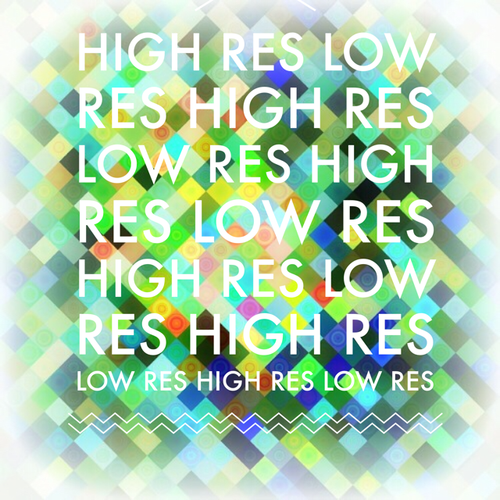by Carolyn Edlund
Using digital images of your art? Different resolution levels and file formats apply in different circumstances.

Let’s say you are planning to print reproductions of your art. Or, perhaps you are running a print ad in a magazine, or you have a new logo that you are using. To get good print quality, you must use high resolution digital files to achieve a crisp, clear image, and therefore you might use a .tif or .png format.
However, if you’re planning to use images of your art online, the opposite applies. Websites do best with low-resolution images. Here’s why you will want to use low-res images of your art on your artist website and on other online platforms:
Pages load faster
Have you ever visited a web page and watched a photo slowly load in small increments? That’s what happens when an image file has been used on the site which is far too large for use online. It makes a website drag, and if you use large image files on your own website, it will cause long page loading times, which only encourage visitors to click away.
You might have larger .tif files for print, but you can reformat them into .jpg or .png files which are more suitable online. And, you can resize images into smaller file sizes, and in smaller dimensions (but you cannot resize images larger, or they will become pixelated.) You can also compress files to make file sizes smaller without changing the dimensions of the image.
These three free resources will help you get organized and use the right resolution, and the right formats:
Zamzar
Want to make a .png image into a .jpg or vice versa? This site converts all types of files into different formats (even music and video files!)
PicResize
Crop and resize your images on this helpful site, or add special effects.
Compress2Go
Reduce file sizes significantly, and save disk space by compressing files here. You can also resize images, and adjust the image quality.
You gain protection from copyright infringers
Low resolution images aren’t suitable for printing, so anyone who wanted to steal images of your artwork or designs and resell without permission would not be able to get a satisfactory print from your low-res image.
Other ways to protect yourself from copyright infringement are to use website software that prevents visitors from uploading images, or by using watermarks. If you do use watermarks on your images, I’d suggest you make them light or almost transparent, and do not place them in the center of the image. This can make it difficult and frustrating to view your art.
Read more information about individual file types and applications here.


Hi Carolyn:
One mistake that we see for our art competitions, is artists trying to make low resolution images larger in order to meet the competition’s sizing requirements. When they do this they degrade the overall quality of the finished image. They should always take the original high resolution image and reduce it down to a resolution of 72 for the web quality images. Web quality has nothing to do with print quality and many artists make that mistake.
I’ve seen the same problem, John. It’s easy to see how people get confused, but it is really essential for artists to understand how to manipulate their images to be able to submit the right size, file type and resolution. This is so rampant, that I literally use the resizer tool every single day, because I receive images that aren’t sized per instructions.